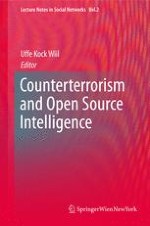2011 | OriginalPaper | Buchkapitel
Effectiveness of Social Networks for Studying Biological Agents and Identifying Cancer Biomarkers
verfasst von : Ghada Naji, Mohamad Nagi, Abdallah M. ElSheikh, Shang Gao, Keivan Kianmehr, Tansel Özyer, Jon Rokne, Douglas Demetrick, Mick Ridley, Reda Alhajj
Erschienen in: Counterterrorism and Open Source Intelligence
Verlag: Springer Vienna
Aktivieren Sie unsere intelligente Suche, um passende Fachinhalte oder Patente zu finden.
Wählen Sie Textabschnitte aus um mit Künstlicher Intelligenz passenden Patente zu finden. powered by
Markieren Sie Textabschnitte, um KI-gestützt weitere passende Inhalte zu finden. powered by
